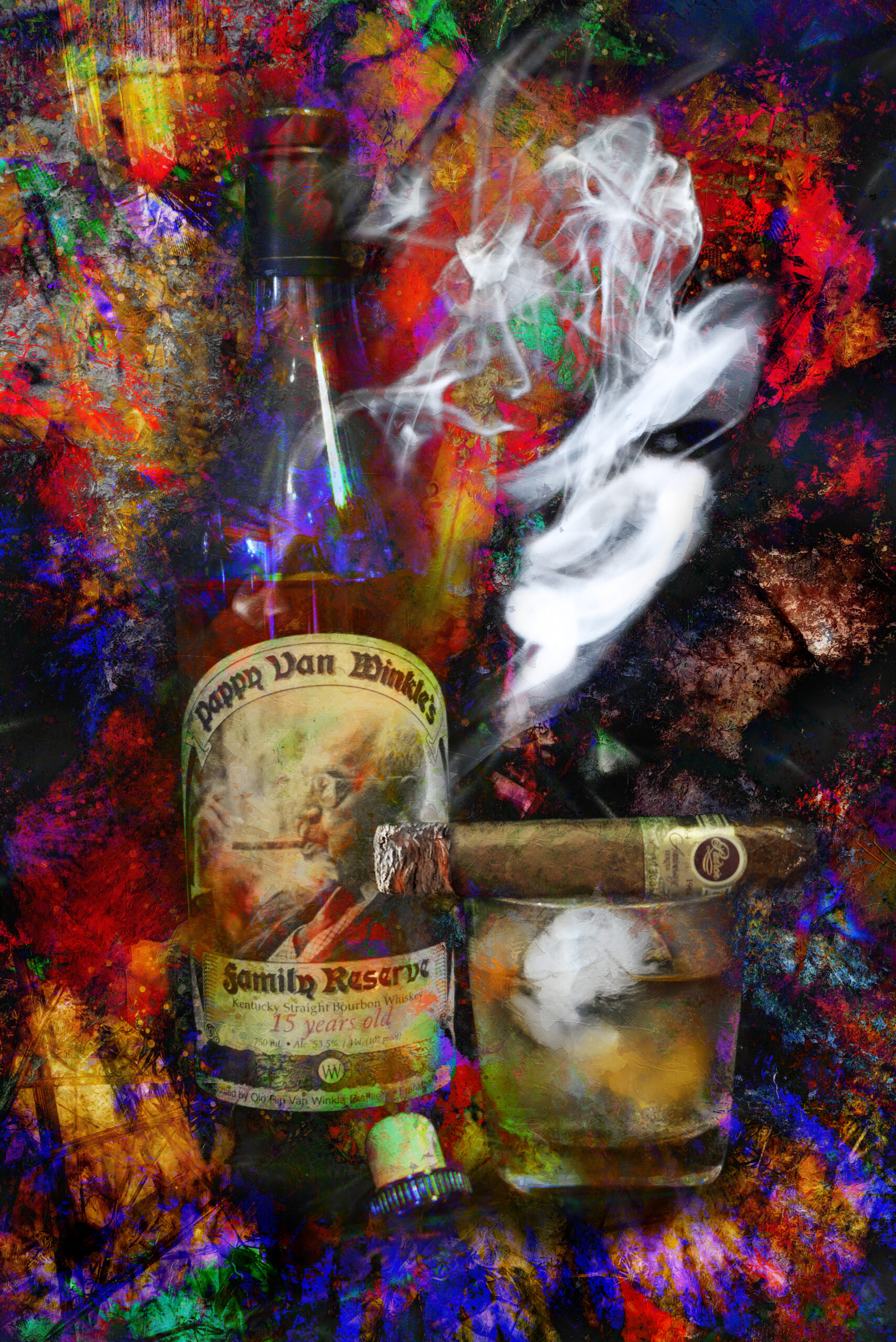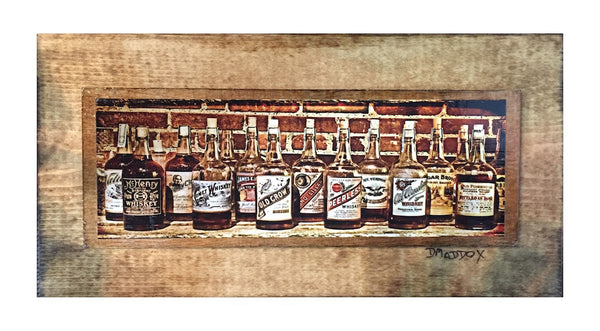Limited Edition Bourbon Art: Why Collectors Are Gathering to Distinct Finds
Limited Edition Bourbon Art: Why Collectors Are Gathering to Distinct Finds
Blog Article
The Significance of Whiskey Art in Celebrating Heritage and Workmanship in the Beverage Sector
The detailed connection in between whiskey art and the celebration of heritage and workmanship within the beverage sector can not be overstated. Via attentively created labels and containers, bourbon brand names encapsulate their historical origins and the artisanal abilities that define their manufacturing approaches.
The Historical Roots of Whiskey
At the heart of whiskey's attraction lies a rich tapestry of historical roots that trace back to ancient people. The origins of scotch can be connected to the distillation techniques of the Sumerians and Babylonians around 2000 BCE, where very early types of fermented grain drinks began to arise. It was in the Center Ages that the art of distillation progressed considerably, especially in Ireland and Scotland, leading to the development of scotch as we understand it today.
The term "bourbon" itself derives from the Gaelic word "uisce beatha," implying "water of life." This expression highlights the cultural importance of bourbon in Celtic societies, where it was frequently associated with routines, parties, and common bonding. By the 15th century, purification ended up being a recognized craft within monastic areas, leading the means for the facility of lawful distilleries.
As profession paths increased, whiskey's appeal expanded, transcending regional limits and catching the interest of connoisseurs worldwide. Limited Edition. This historical journey mirrors not just the workmanship behind bourbon manufacturing but additionally its essential role in cultural and social contexts, noting it as a substantial beverage throughout background
Artistic Expression in Branding
Bourbon branding stands as a compelling intersection of creativity and business, where visual identification plays a critical duty in shaping customer perception. The looks of scotch tags, packaging, and marketing products show not only the brand name's story yet additionally its core values and heritage. With artistic expression, distilleries share a story that reverberates with consumers, evoking emotions and stimulating links.
The use of shade, typography, and imagery in branding serves to set apart items in a saturated market. Typical concepts may evoke a sense of credibility and workmanship, while modern-day designs can indicate development and forward-thinking. This tactical artistic instructions boosts brand acknowledgment and loyalty, enabling consumers to forge a personal partnership with the whiskey they select.
In addition, imaginative expression in branding typically works as a party of local heritage. Distilleries frequently incorporate local signs or historic recommendations into their styles, creating a local color that invites customers to take part in a more comprehensive cultural experience. Ultimately, the creativity behind bourbon branding not just improves visual charm however additionally enhances the overall narrative of the brand name, promoting a much deeper appreciation for the workmanship and heritage embedded in each bottle.
Craftsmanship in Bottle Style
The creativity noticeable in scotch branding extends past aesthetic identification to encompass the craftsmanship associated with container layout. Each container functions as a vessel not simply for the spirit within, however additionally for the tale it tells concerning its practice, origin, and quality. The style procedure needs meticulous attention to information, as components such as closure, shape, and product add substantially to the overall perception of the bourbon.
Craftsmanship in container layout includes choosing high-quality glass that can enhance the bourbon's color and clearness, while additionally supplying a responsive experience for the customer. The silhouette of the container must be both useful and cosmetically attractive, usually mirroring the heritage of the brand name. Many distilleries choose for special forms or embossed logos that evoke a feeling of authenticity and history.
Additionally, the tag style and typography play a critical role in connecting the brand's narrative. Bourbon Art. A well-crafted container not only mesmerizes the consumer's eye yet likewise strengthens the brand name's commitment to high quality and practice. By doing this, the workmanship Full Article of container layout becomes a vital facet of the bourbon experience, combining virtuosity with a profound regard for heritage
Cultural Significance of Scotch Art
Commemorating practice and workmanship, the cultural relevance of whiskey art goes beyond mere visual appeals, linking with the historic and social stories of the areas from which it originates. Each container functions as a canvas, illustrating the distinct tales, folklore, and practices that have formed regional whiskey-making practices. The elaborate styles frequently reflect the heritage of the distillers, including symbols and concepts that reverberate with the culture and worths of their areas.

On top of that, scotch art plays a vital function in common celebrations and parties, functioning as a substantial web link between people and their shared experiences. By appreciating the creativity in whiskey packaging, customers grow a deeper understanding and regard for the craft, ultimately improving their satisfaction of the beverage itself.
Modern Trends in Bourbon Discussion
Recently, the discussion of scotch has progressed to mirror contemporary tastes and patterns while still honoring conventional workmanship - Limited Edition. Distilleries are progressively concentrating on visual aspects that improve the general alcohol consumption experience, linking the space in between heritage and modernity
Cutting-edge container layouts have actually arised, frequently including lasting materials and imaginative labels that tell compelling stories. Lots of brands currently collaborate with neighborhood musicians, infusing their items with special visual expressions that resonate with consumers. Furthermore, limited-edition launches are usually packaged in collectible containers, including value and appeal for aficionados.

Verdict
Finally, bourbon art serves as a crucial avenue for expressing the heritage and craftsmanship inherent in the drink sector. Via elaborate branding, innovative bottle designs, and culturally substantial creative components, bourbon brand names effectively recognize their customs and connect with customers. This artistic story not only raises the admiration of bourbon however also enhances neighborhood identity and pride amongst manufacturers. Inevitably, scotch art plays a crucial role in preserving and celebrating the abundant social tapestry of whiskey-making.


Workmanship in container style includes selecting high-grade glass that Look At This can enhance the whiskey's color and clarity, while likewise giving a responsive experience for the customer. click here for more info In this way, the workmanship of bottle layout becomes an important element of the scotch experience, merging virtuosity with a profound respect for heritage.
In verdict, bourbon art serves as a crucial avenue for revealing the heritage and workmanship integral in the beverage market.
Report this page